Gestalt psychology is a school of thought that emerged in the late 19th and early 20th century, with roots in Germany. It is a psychological approach that focuses on understanding the human mind and behavior as a whole entity, rather than breaking it down into smaller parts. The word Gestalt is a German term that roughly translates to whole or form. This concept of wholeness and organization is at the core of Gestalt psychology, and it has greatly influenced the field of modern psychology. In this essay, we will explore the origin and key principles of Gestalt psychology and its impact on our understanding of the human mind.
Gestalt psychology or gestaltism (German: Gestalt – “essence or shape of an entity’s complete form”) of the Berlin School is a theory of mind and brain positing that the operational principle of the brain is holistic, parallel, and analog, with self-organizing tendencies. The Gestalt effect is the form-generating capability of our senses, particularly with respect to the visual recognition of figures and whole forms instead of just a collection of simple lines and curves. In psychology, gestaltism is often opposed to structuralism and Wundt. The phrase “The whole is greater than the sum of the parts” is often used when explaining Gestalt theory.
Origins
The concept of Gestalt was first introduced in contemporary philosophy and psychology by Christian von Ehrenfels (a member of the School of Brentano). The idea of Gestalt has its roots in theories by Johann Wolfgang von Goethe, Immanuel Kant, David Hartley, and Ernst Mach. Max Wertheimer’s unique contribution was to insist that the “Gestalt” is perceptually primary, defining the parts of which it was composed, rather than being a secondary quality that emerges from those parts, as von Ehrenfels’s earlier Gestalt-Qualität had been.
Both von Ehrenfels and Edmund Husserl seem to have been inspired by Mach’s work Beiträge zur Analyse der Empfindungen (Contributions to the Analysis of the Sensations, 1886), in formulating their very similar concepts of Gestalt and Figural Moment, respectively. Early 20th century theorists, such as Kurt Koffka, Max Wertheimer, and Wolfgang Köhler (students of Carl Stumpf) saw objects as perceived within an environment according to all of their elements taken together as a global construct. This ‘gestalt’ or ‘whole form’ approach sought to define principles of perception — seemingly innate mental laws which determined the way in which objects were perceived. It is based on the here and now, and in the way you view things. It can be broken up into two: figure or ground, at first glance do you see the figure in front of you or the background?
These laws took several forms, such as the grouping of similar, or proximate, objects together, within this global process. Although Gestalt has been criticized for being merely descriptive, it has formed the basis of much further research into the perception of patterns and objects ( Carlson et al. 2000), and of research into behavior, thinking, problem solving and psychopathology.
It should also be emphasized that Gestalt psychology is distinct from Gestalt psychotherapy. One has little to do with the other.
Gestalt Psychology, founded by Max Wertheimer, was to some extent a rebellion against the molecularism of Wundt’s program for psychology, in sympathy with many others at the time, including William James. In fact, the word Gestalt means a unified or meaningful whole, which was to be the focus of psychological study instead.
It had its roots in a number of older philosophers and psychologists:
Ernst Mach (1838-1916) introduced the concepts of space forms and time forms. We see a square as a square, whether it is large or small, red or blue, in outline or technicolor… This is space form. Likewise, we hear a melody as recognizable, even if we alter the key in such a way that none of the notes are the same.
Christian von Ehrenfels (1859-1932), who studied with Brentano in Vienna, is the actual originator of the term Gestalt as the Gestalt psychologists were to use it. In 1890, in fact, he wrote a book called On Gestalt Qualities. One of his students was none other than Max Wertheimer.
Oswald Külpe (1862-1915) was a student of G. E. Müller at Göttingen and received his doctorate at Leipzig. He studied as well with Wundt, and served as Wundt’s assistant for many years. He did most of his work while at the University of Würzburg, between 1894 and 1909.
He is best known for the idea of imageless thoughts. Contrary to Wundtians, he showed that some mental activities, such as judgments and doubts, could occur without images. The “pieces” of the psyche that Wundt postulated — sensations, images, and feelings — were apparently not enough to explain all of what went on. He oversaw the doctoral dissertation of one Max Wertheimer.
Max Wertheimer
So who was this Max Wertheimer? He was born in Prague on April 15, 1880. His father was a teacher and the director at a commercial school. Max studied law for more than two years, but decided he preferred philosophy. He left to study in Berlin, where he took classes from Stumpf, then got his doctoral degree (summa cum laude) from Külpe and the University of Würzburg in 1904. In 1910, he went to the University of Frankfurt’s Psychological Institute. While on vacation that same year, he became interested in the perceptions he experienced on a train. While stopped at the station, he bought a toy stroboscope — a spinning drum with slots to look through and pictures on the inside, sort of a primitive movie machine or sophisticated flip book.
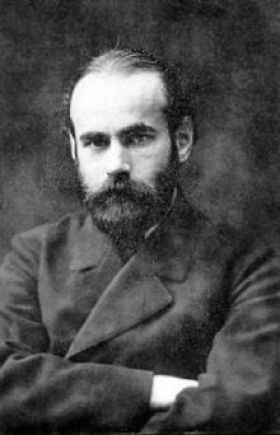
Max Wertheimer
At Frankfurt, his former teacher Friedrich Schumann, now there as well, gave him the use of a tachistoscope to study the effect. His first subjects were two younger assistants, Wolfgang Köhler and Kurt Koffka. They would become his lifelong partners. He published his seminal paper in 1912: “Experimental Studies of the Perception of Movement.” That year, he was offered a lectureship at the University of Frankfurt. In 1916, he moved to Berlin, and in 1922 was made an assistant professor there. In 1925, he came back to Frankfurt, this time as a professor.
In 1933, he moved to the United States to escape the troubles in Germany. The next year, he began teaching at the New School for Social Research in New York City. While there, he wrote his best known book, Productive Thinking, which was published posthumously by his son, Michael Wertheimer, a successful psychologist in his own right. He died October 12, 1943 of a coronary embolism at his home in New York.
Wolfgang Köhler
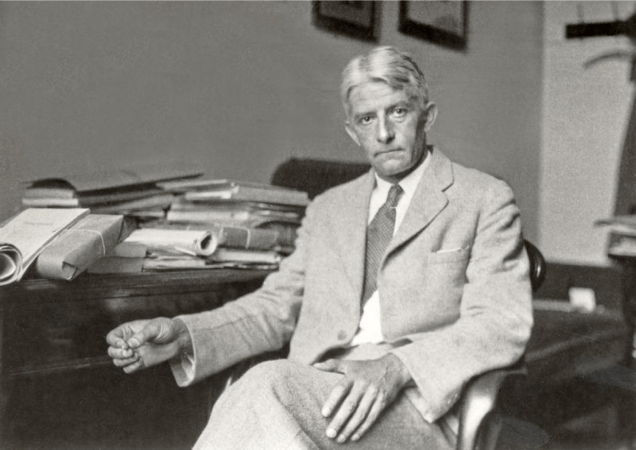
Wolfgang Köhler was born January 21, 1887, in Reval, Estonia. He received his PhD in 1908 from the University of Berlin. He then became an assistant at the Psychological Institute in Frankfurt, where he met and worked with Max Wertheimer. In 1913, he took advantage of an assignment to study at the Anthropoid Station at Tenerife in the Canary Islands, and stayed there till 1920. In 1917, he wrote his most famous book, Mentality of Apes. In 1922, he became the chair and director of the psychology lab at the University of Berlin, where he stayed until 1935. During that time, in 1929, he wrote Gestalt Psychology. In 1935, he moved to the U.S., where he taught at Swarthmore until he retired. He died June 11, 1967 in New Hampshire.
Kurt Koffka
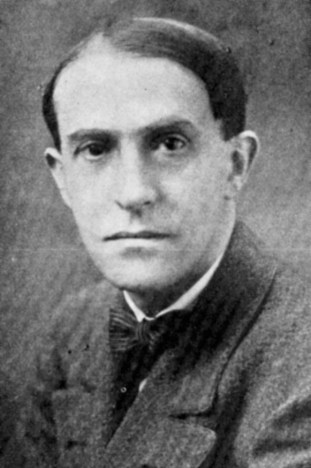
Kurt Koffka was born March 18, 1886, in Berlin. He received his PhD from the University of Berlin in 1909, and, just like Köhler, became an assistant at Frankfurt. In 1911, he moved to the University of Giessen, where he taught till 1927. While there, he wrote Growth of the Mind: An Introduction to Child Psychology (1921). In 1922, he wrote an article for Psychological Bulletin which introduced the Gestalt program to readers in the U.S. In 1927, he left for the U.S. to teach at Smith College. He published Principles of Gestalt Psychology in 1935. He died in 1941.
Kurt Lewin
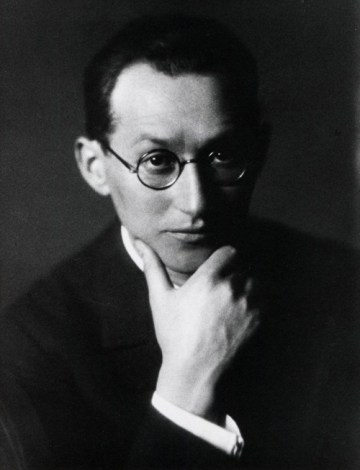
Gestalt Psychology, even though it no longer survives as a separate entity, has had an enormous impact. Two people in particular lead the way in introducing it into other aspects of psychology: Kurt Goldstein and Kurt Lewin. Kurt Lewin was born September 9, 1890, in Mogilno, Germany. He received his PhD from the University of Berlin under Stumpf. After military service, he returned to Berlin where he worked with Wertheimer, Koffka, and Köhler. He went to the U.S. as a guest lecturer at Stanford and Cornell, and took a position at the University of Iowa in 1935. In 1944, he created and directed the Research Center for Group Dynamics at MIT. He died in 1947, just beginning his work there.
Lewin created a topological theory that expressed human dynamics in the form of a map representing a person’s life space. The map is patterned with one’s needs, desires, and goal, and vectors or arrows indicated the directions and strengths of these forces — all operating as a Gestalt. This theory inspired any number of psychologists in the U.S., most particularly those in social psychology. Among the people he influenced were Muzafer Sherif, Solomon Asch, and Leon Festinger.
Kurt Goldstein
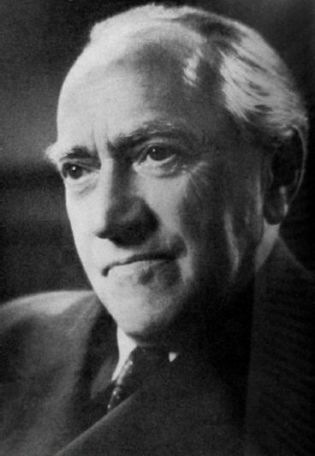
The other person was Kurt Goldstein. Born in 1878, he received his MD from the University of Breslau in 1903. He went to teach at the Neurological Institute of the University of Frankfurt, where he met the founders of Gestalt psychology. He went to Berlin to be a professor there, and then went on to New York City in 1935. There, he wrote The Organism in 1939, and later Human Nature in the Light of Pathology in 1963. He died in 1965.
Golstein developed a holistic view of brain function, based on research that showed that people with brain damage learned to use other parts of their brains in compensation. He extended his holism to the entire organism, and postulated that there was only one drive in human functioning, and coined the term self-actualization. Self-preservation, the usual postulated central motive, he said, is actually pathological!
Goldstein and his idea of self-actualization influence quite a few young personality theorists and therapists. Among them would be Gordon Allport, Carl Rogers, and Abraham Maslow, founders of the American humanistic psychology movement.